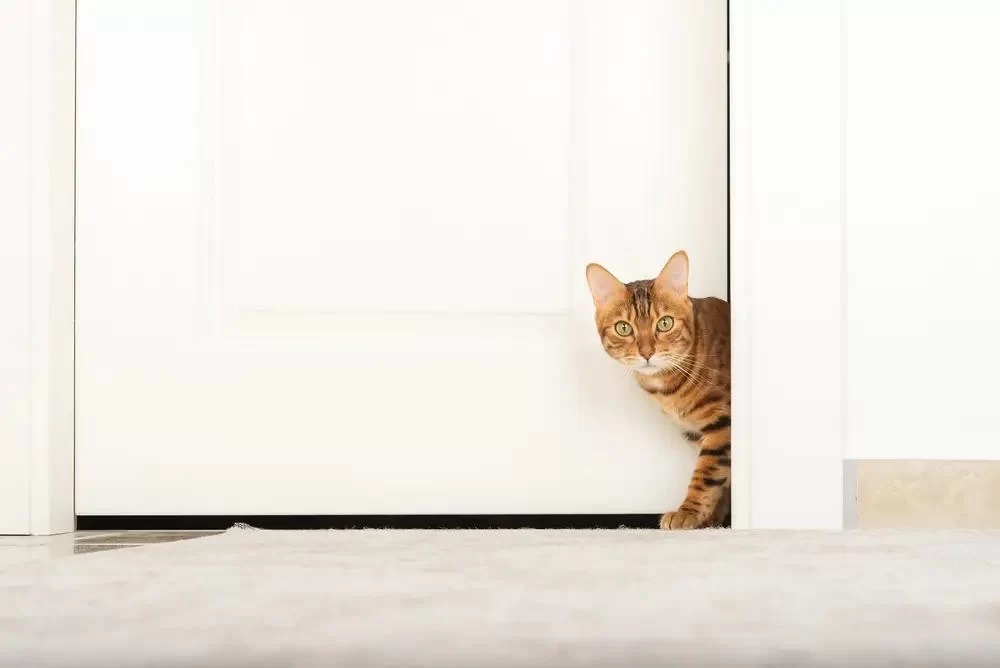How to Prevent Your Cat from Escaping Outside: Practical Tips and Solutions
When I first adopted my cat, Luna, she was an indoor-only cat. However, one day, she managed to slip past me when I opened the door, and before I knew it, she was darting around outside. My heart dropped. I wasn’t prepared for this—she wasn’t used to the outdoors, and I feared for her safety. If you’ve ever had a similar experience with your cat, you know just how frustrating and frightening it can be when your cat tries to escape outside. The good news is that there are effective strategies to prevent your cat from making a run for it. In this article, I’ll share the steps I took to keep Luna safe and how you can stop your cat from escaping outside too.
1. Understand the Root Causes of Escaping Behavior
Before I could address Luna’s escape attempts, I needed to understand why she was trying to get outside in the first place. Cats are naturally curious animals, and many indoor cats are intrigued by the world outside. Luna’s interest in the outdoors could have been sparked by the sounds, smells, and movements she saw through the windows or from the front door. It’s important to realize that escaping is not always a sign of behavioral issues; it’s often driven by natural curiosity or a desire for exploration.
Another reason cats try to escape could be due to boredom. If Luna didn’t have enough stimulation inside, she might have been trying to find adventure elsewhere. This is common for cats that spend a lot of time indoors without sufficient mental or physical stimulation. Understanding why your cat wants to escape will help you find the best approach to prevent it. For Luna, her desire to explore was the primary factor, and once I knew this, I could begin addressing the issue more effectively.
2. Ensure Your Cat Has Plenty of Entertainment Indoors
One of the first steps I took to keep Luna from trying to escape was to make sure she had plenty of entertainment and stimulation indoors. Boredom can lead cats to seek out new environments, so I started to provide her with more engaging activities. I introduced new toys like puzzle feeders and interactive cat wands to keep her entertained. Luna loves to chase, so I found that a feather wand was a great way to help her release some of her energy.
Additionally, I added vertical spaces such as cat trees and shelves. Cats naturally enjoy climbing and observing their environment from higher vantage points. By giving Luna a place to perch, I noticed she was much less likely to try and escape. Vertical spaces also provide a mental challenge for your cat, encouraging her to explore and exercise her body in a safe and controlled manner. This way, Luna got her curiosity satisfied without having to venture outdoors.
3. Use Secure Windows and Doors
One of the biggest challenges in preventing Luna from escaping was making sure that all doors and windows were securely closed. As much as I love letting fresh air into the house, I quickly learned that I needed to be extra careful around windows and doors. I started keeping windows closed or using screens to prevent Luna from sneaking through when I opened them for ventilation.
In addition, I began keeping the front door closed at all times, especially when I was coming or going. Luna was quick to seize any opportunity, and I realized I needed to be vigilant about letting her out, even for a few seconds. To further limit her access, I started using a baby gate near the entrance to create a barrier between her and the open door. This simple change made it much easier to manage her escape attempts and allowed me to open the door without fear of her darting outside.
4. Train Your Cat to Respond to Commands
Training a cat may seem challenging, but I found that with patience, consistency, and positive reinforcement, I could teach Luna to respond to simple commands. The most important command in preventing escape was “stay.” I began by practicing “stay” near the door whenever I opened it. I would give Luna a treat and praise whenever she stayed back instead of rushing to the door.
This simple training technique helped create a positive association with staying away from the door. The more I reinforced her calm behavior with rewards, the more she began to understand that staying behind the door was the right choice. Eventually, Luna started to wait patiently when the door was opened, and I no longer had to worry about her trying to escape when I entered or exited the house.
5. Create a Safe Outdoor Space with a Cat Enclosure
Since Luna had such a strong desire to explore the outdoors, I decided to give her a taste of the outside world while still keeping her safe. I purchased a cat enclosure, also known as a “catio,” which is essentially an outdoor space designed specifically for cats. This allowed Luna to enjoy the fresh air and sights of the outdoors without the danger of running off or getting hurt.
Setting up a catio was one of the best decisions I made. It gave Luna the chance to safely explore nature while staying contained. The catio was large enough for her to move around and even climb, so it met her natural need for exploration. The peace of mind I gained from knowing she was safe in her little outdoor space was invaluable, and it also helped reduce her attempts to escape the house.
6. Spay/Neuter to Reduce the Urge to Escape
While Luna’s primary reason for wanting to escape was curiosity, some cats are driven by the instinct to mate. If you have an unspayed or unneutered cat, they may be more likely to try and escape to find a mate. I made sure that Luna was spayed early on, and this significantly reduced her desire to escape during mating seasons. Spaying or neutering your cat not only prevents unwanted pregnancies but also helps curb some of the behaviors that may be associated with roaming and escaping.
If you haven’t already had your cat spayed or neutered, this is an important step to take in preventing escape attempts. It’s not just beneficial for your cat’s health, but it can also reduce the temptation for your cat to roam in search of a mate, which is one of the primary reasons many cats run away or try to escape the home.
7. Provide Plenty of Positive Reinforcement
Finally, as with any behavior modification, I learned that positive reinforcement was key. Each time Luna remained calm around the door or chose to stay inside when given the option, I rewarded her with a treat, praise, or affection. This created a positive association with staying indoors, and she started to enjoy spending time at home rather than feeling the urge to escape.
Whenever Luna tried to escape, I would calmly redirect her to a safer activity, such as playing with a toy or exploring her catio. By consistently rewarding the behavior I wanted to see—staying calm and indoors—I was able to gradually reduce her escape attempts. Over time, Luna became more content with her indoor environment, and she stopped trying to make a break for the outside world.












